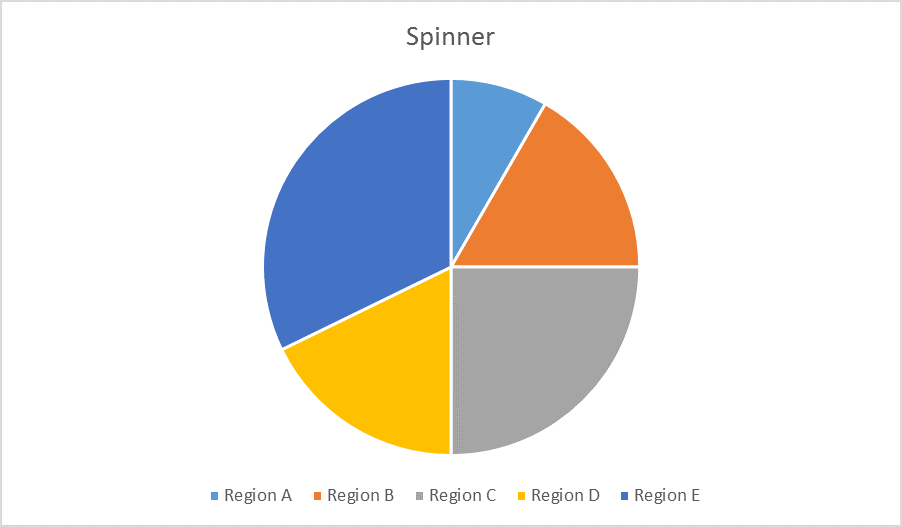Overview
Usually, probability is calculated in terms of relative numerical frequencies. However, it can also be calculated in terms of ratios of area.
Probability of Area
Suppose that a target is located on a board. A dart thrown at the board will land somewhere on the board, either outside the target or inside the target. The relative probability that the dart will land somewhere in the area of the target can be calculated by comparing the percentage of the board that is covered by the target with the total area of the board. For example, if the area of the entire target board were 400 square feet and the area of the target was 250 square feet, the probability that a dart would land somewhere in the target would be 250/400, or 0.625.
Figure 1: The probability that the dart will land somewhere in the target is the measurement of the total area minus the area of the target.
Probability of Length
The ratio of lengths can also be compared to calculate probability. Suppose that a stretch of highway is 100 miles long, and accidents occur randomly along this route. It is not possible to predict that an accident will occur at a precise point along the 100-mile stretch of road, but it is possible to predict the ratio of accidents along an area of highway. The probability that an accident will occur within a 6-mile area of the highway would be 6/100 or .06. The probability that an accident would occur within a 30-mile stretch will be .30.
Probability of Angle
A fair spinner is constructed so that the spinner is equally likely to point in any direction along the radius of the circle. The circle is divided into wedges from the center of the circle, so that it resembles a pie chart. The probability that it will fall within any wedge will be equal to the ratio of the size of the angle to the entire 360o circle. Suppose that a spinner is constructed so that region A is a 30o angle, region B is a 60o angle, region C is a 90o angle, region D is a 64o angle, and region E is an 116o angle. The probability that the spinner lands in Region B is 60/360, or about 0.17.
Figure 2: The probability that a spinner will land in Region A is about .08, Region B, about 0.17, Region C, 0.25, Region D, about 0.18, Region E, about 0.32
General Rule
The general rule for calculating probability without counting in a region is by calculating the ratio of the target region to the entire area, if all points occur randomly in an area. There are many applications of this idea. Suppose that the signals from a lost plane are coming from a certain region, but its exact location is unknown. It is possible to predict the possibility that it is within a designated area by comparing the ratio of the search area with the entire area. Until the lost plane has been found, nothing is certain.
Interested in algebra tutoring services? Learn more about how we are assisting thousands of students each academic year.
SchoolTutoring Academy is the premier educational services company for K-12 and college students. We offer tutoring programs for students in K-12, AP classes, and college. To learn more about how we help parents and students in Oak Ridge, TN: visit Tutoring in Oak Ridge, TN




